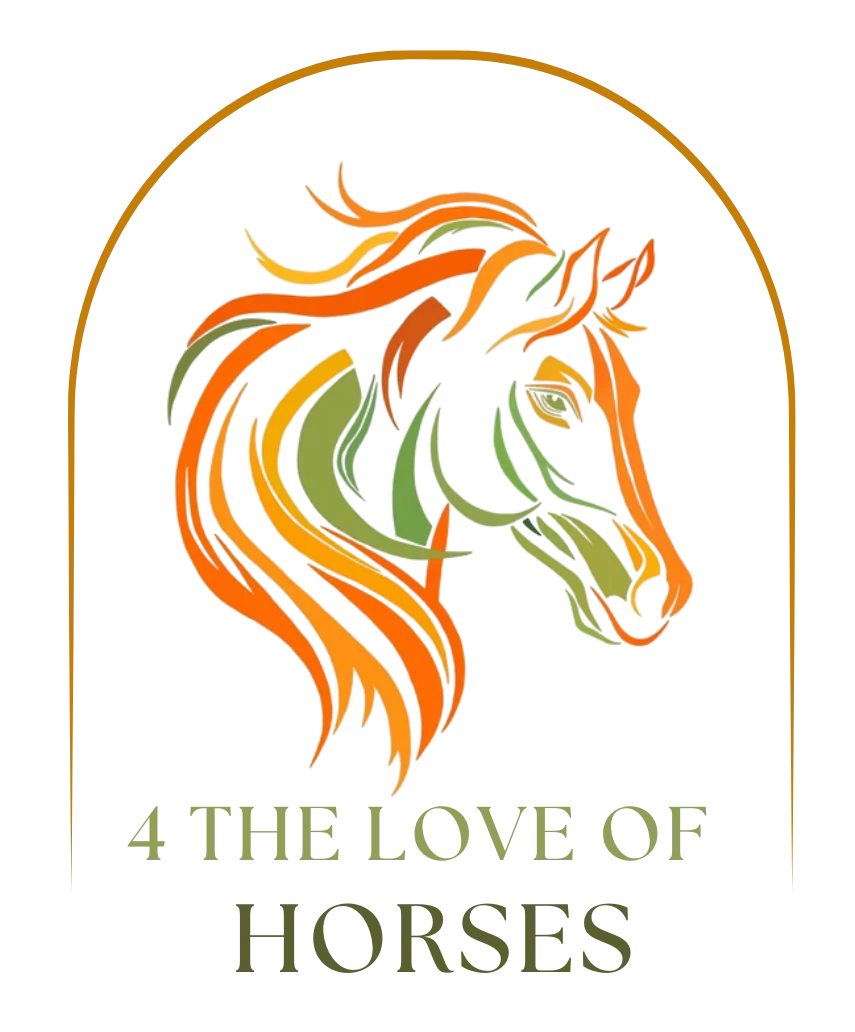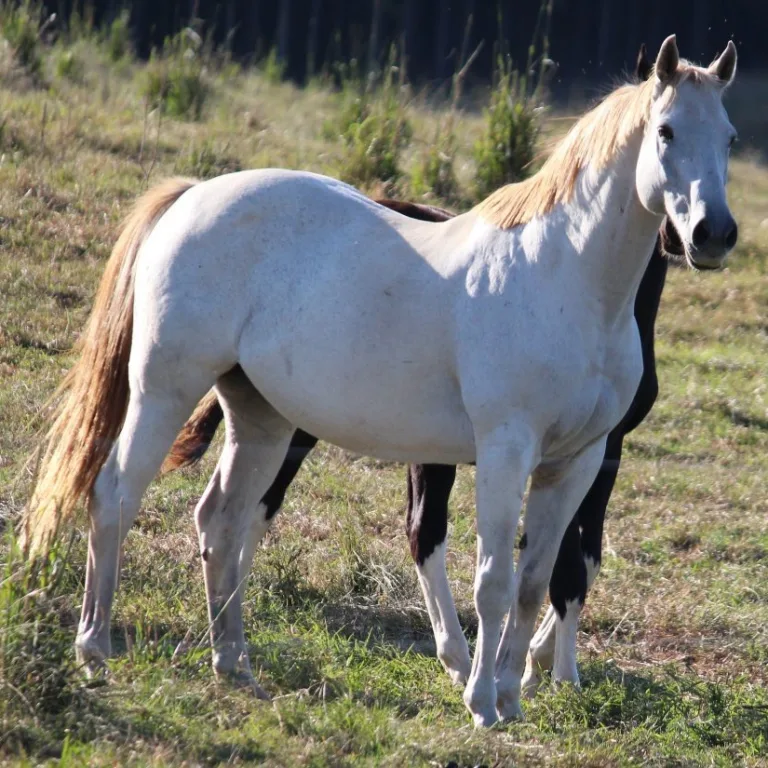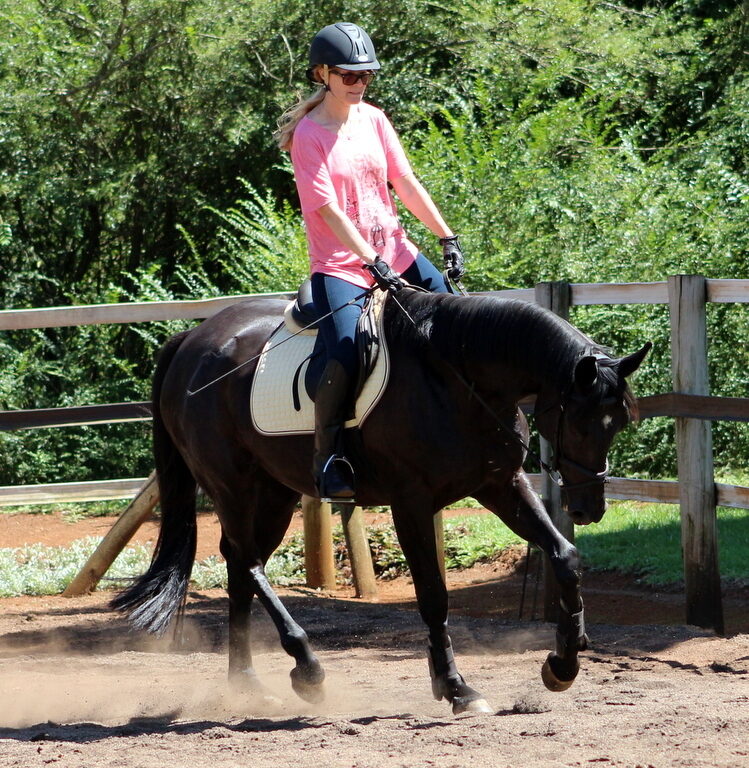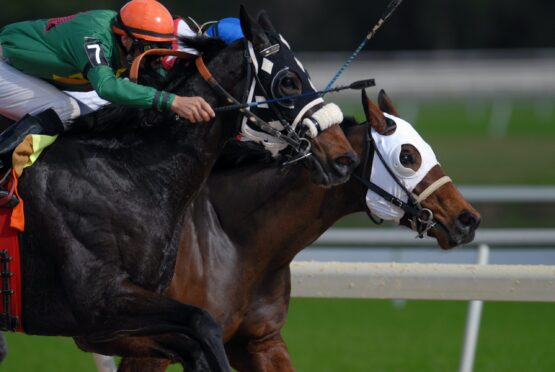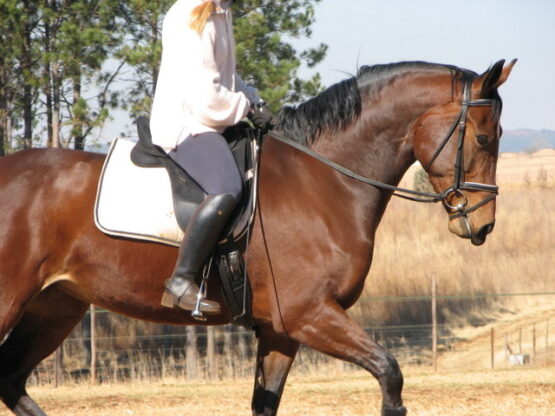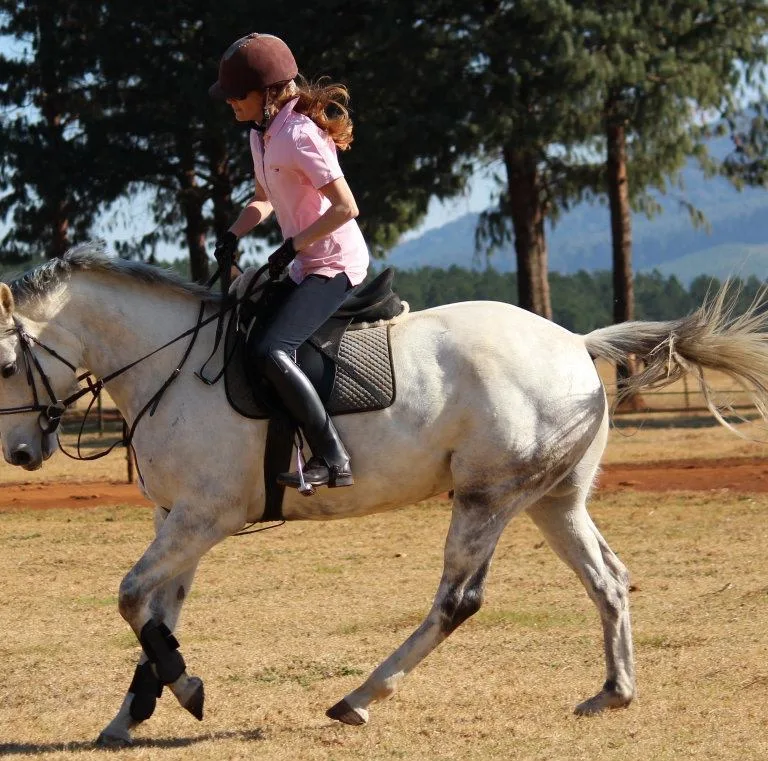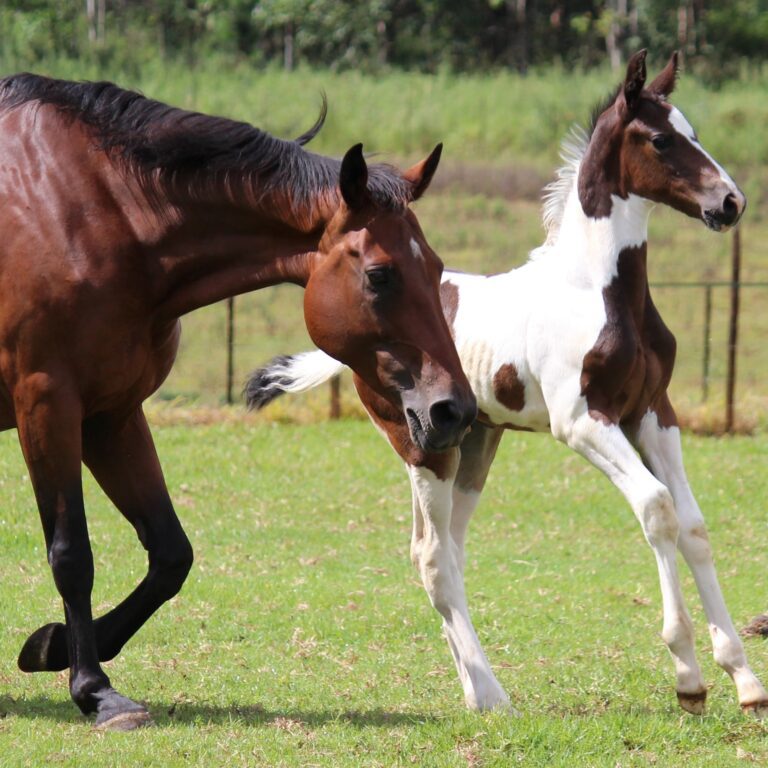Precision in Every Stride: Lateral Movement Fundamentals
Lateral movement in horse training is a fundamental aspect that holds the key to unlocking a realm of precision and finesse in your equine partner’s performance. As a rider and trainer, you’ll find that lateral movements encompass a range of graceful maneuvers that involve your horse stepping sideways while maintaining balance, rhythm, and harmony. From the elegant leg yield to the intricate haunches-in, these movements not only showcase the beauty of equine athleticism but also form a crucial foundation for advanced training disciplines.
The Importance of Precision
Precision isn’t just a goal in horse training – it’s a cornerstone. The art of lateral movement isn’t only about the mechanical execution of the movement; it’s about achieving a level of finesse that reflects the depth of your communication and partnership with your horse. Precision holds the power to transform a good performance into a great one, elevate your horse’s responsiveness to your cues, and build a sense of unity that extends beyond the riding arena.
Imagine the impact of flawlessly executed lateral movements: the seamless transitions, the synchronized steps, and the undeniable connection between horse and rider. It’s within this precision that the true magic of horsemanship is unveiled.
In the upcoming sections of this blog, we will are going to have a thorough look at the world of lateral movement fundamentals. We will delve into the very core of what makes these movements essential, the principles that govern their execution, and the step-by-step techniques that will guide you toward mastering them. From understanding the biomechanics behind each movement to troubleshooting common challenges, this blog aims to equip you with a robust toolkit for achieving precision in every stride.
Here’s a glimpse of what’s to come:
- Understanding Lateral Movement: We’ll start by defining lateral movement, exploring its benefits, and highlighting its role in your horse’s development.
- Foundation for Precision: Before we dive into the movements themselves, we’ll emphasize the importance of a strong foundational training approach.
- Essential Lateral Movements: Get ready to explore key lateral movements, including leg yield, shoulder-in, haunches-in, and sidepass. We’ll break down each movement, discuss their significance, and provide detailed guides for practice.
- Fine-Tuning Precision: Precision hinges on the details. In this section, we’ll uncover the nuances that contribute to precise lateral movements.
- Developing a Training Plan: Building on your understanding, we’ll help you design a structured training plan that gradually refines your horse’s lateral abilities.
- Building Trust and Partnership: Lateral movements aren’t just about technique; they’re about forging a deeper connection with your horse. We’ll explore how lateral work can enhance your partnership.
- Troubleshooting and Troubleshooters: Challenges are a natural part of training. We’ll address common issues and offer solutions to ensure your progress remains steady.
- Celebrating Progress: Every achievement deserves recognition. We’ll discuss the joys of incremental improvement and share stories of success.
By the end of this exploration, you’ll be well-equipped to embark on a journey of precision and grace, as you and your horse navigate lateral movements with confidence and finesse.
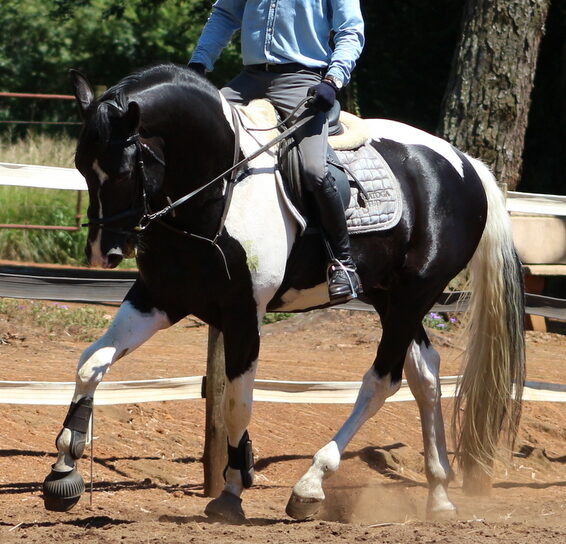
Understanding Lateral Movement
Lateral movement, in the realm of horse training, refers to a set of exercises where the horse is guided to step sideways while maintaining a balanced and controlled attitude. Unlike forward or backward movements, lateral work involves lateral or sideways steps, often performed in response to specific cues from you as the rider. These movements showcase your horse’s flexibility, suppleness, and willingness to respond to your aids, creating a harmonious dance between you and your equine companion.
Exploring the Biomechanics Behind Lateral Movements
Lateral movements are a symphony of equine biomechanics. When a horse executes a lateral step, a series of intricate muscle contractions and shifts in weight occur. The horse engages its abdominal muscles to support its body while laterally flexing its spine. Simultaneously, the horse redistributes its weight, allowing one set of limbs to bear more load than the others.
For instance, during a leg yield, the horse’s hindquarters step slightly under its body, while the shoulders move slightly away from the direction of movement. This nuanced weight shift facilitates lateral motion without compromising balance. As the horse becomes adept at these movements, its muscles become more elastic, contributing to a fluid and graceful performance.
Highlighting the Benefits for Horse’s Physical and Mental Development
Engaging in lateral movements has many benefits for a horse’s holistic well-being. Physically, these exercises enhance the horse’s suppleness and flexibility. The controlled lateral shifts encourage the elongation of muscles along the horse’s sides, contributing to improved range of motion and overall body coordination.
Mentally, lateral movements offer stimulating challenges. The horse must attentively listen to the rider’s aids, discerning between subtle cues for direction and rhythm. This mental engagement fosters a sense of partnership and communication between horse and rider, promoting trust and understanding.
Moreover, lateral work really helps prevent monotony in training routines. As horses, like humans, can experience mental fatigue from repetitive exercises, introducing lateral movements adds variety and excitement to training sessions, keeping the horse’s mind sharp and eager to learn.
In summary, lateral movements are a dynamic blend of biomechanics and mental engagement. They provide a platform for the horse to develop physical grace, mental acuity, and a deeper connection with its rider. As we progress through this exploration, you’ll discover how mastering these movements can lead to precision and elegance in every stride.
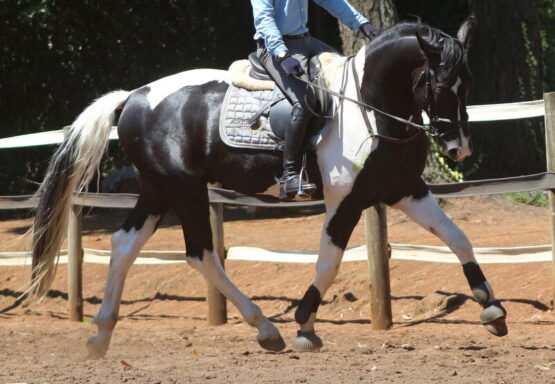
The Foundation for Precision
Before embarking on the intricate journey of lateral movement training, it’s crucial to recognize the pivotal role that a strong basic foundation plays. Just as a majestic tree needs deep roots to stand tall, your horse’s ability to excel in lateral movements relies on solid groundwork. Basic training forms the bedrock upon which you’ll build precision, control, and partnership.
Think of basic training as the alphabet of your horse’s education – a set of skills and understanding that enable effective communication between you and your equine companion. A horse that responds promptly to cues, moves in harmony with your aids and maintains balance is better prepared to grasp the complexities of lateral movements. Investing time in cultivating a robust foundation is the first stride toward achieving flawless lateral work.
Highlighting Key Prerequisites for Successful Lateral Movement Training
- Responsive Communication between Horse and Rider: Effective lateral movement needs clear communication. Your horse must not only understand your cues but also respond willingly and promptly. This responsiveness comes from cultivating a partnership built on trust and clear signals. Practice refining your aids, ensuring they are understood by your horse. The ability to ask for and receive lateral movement cues is the bridge that communicates your desires into your horse’s graceful steps.
- Establishing Proper Balance and Impulsion: Balance is essential to be able to teach your horse lateral movements. Your horse’s ability to shift its weight smoothly from one set of legs to another is essential for executing lateral steps with finesse. Achieving this balance is closely intertwined with impulsion – the energy that propels your horse forward. Proper impulsion, controlled through your seat, leg, and rein aids, provides the momentum required for lateral motion without sacrificing stability.
- Developing Suppleness and Flexibility: Lateral movements demand a heightened level of suppleness and flexibility from your horse. Suppleness refers to the ease with which your horse can bend its body, particularly its ribcage, around turns and curves. Flexibility allows the horse to shift its weight and legs laterally without tension or resistance. Exercises that encourage bending, such as serpentines and circles, lay the groundwork for the fluid motions essential in lateral work.
By focusing on these prerequisites, you pave the path toward precision in lateral movements. Each requirement forms a thread that weaves into the intricate tapestry of lateral training, ensuring that your horse is physically prepared, mentally engaged, and receptive to the artistry of these maneuvers.
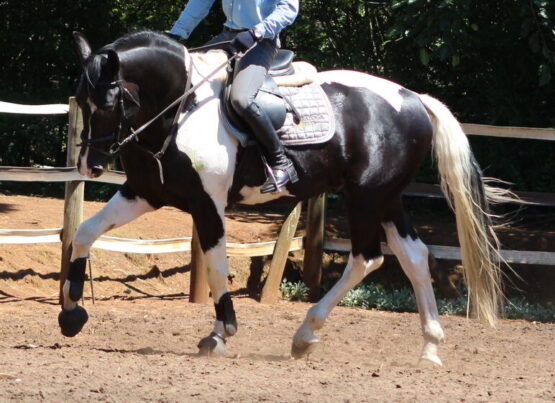
Essential Lateral Movements
Breaking Down Fundamental Lateral Movements
- Leg Yield: The leg yield is a foundational lateral movement where the horse moves diagonally, crossing its legs over in response to the rider’s aids. It involves both lateral and forward movement and is often introduced at the walk and later at the trot. This movement prepares the horse for more advanced lateral exercises and enhances its suppleness.
- Shoulder-In: The shoulder-in requires the horse to move its forehand slightly inward while maintaining a straight line with its hindquarters. This lateral movement enhances engagement, balance, and collection. It’s a valuable tool for developing the horse’s ability to carry itself with elegance and precision.
- Haunches-In: In contrast to the shoulder-in, the haunches-in involves moving the horse’s hindquarters slightly inward along a straight line. This movement fosters increased engagement of the horse’s hindquarters and encourages proper tracking of the hind legs under the body.
- Sidepass: The sidepass is a lateral movement where the horse moves sideways, either directly sideways or at a diagonal angle. It’s a versatile movement used for various purposes, from navigating tight spaces to showcasing the horse’s responsiveness and agility.
The Purpose and Benefits of Each Movement
- Leg Yield: The leg yield establishes the horse’s understanding of moving laterally in response to your aids. It encourages flexibility and suppleness, which are vital for more advanced lateral work and overall athleticism.
- Shoulder-In: The shoulder-in refines the horse’s balance, engagement, and lateral flexibility. It’s a building block for collection and self-carriage, contributing to improved impulsion and harmony in movement.
- Haunches-In: Haunches-in strengthens the horse’s hindquarters, promoting engagement and developing the ability to bear weight behind. It lays the groundwork for advanced lateral movements like half-pass and pirouettes.
- Sidepass: The sidepass showcases the horse’s ability to move sideways with precision, reflecting its responsiveness to subtle cues. It enhances agility and responsiveness, essential in navigating obstacles and demonstrating overall control.
Step-by-Step Guides for Practicing Each Movement
- Rider Aids and Cues:
- Leg Yield: Apply alternating leg pressure, starting with the outside leg behind the girth and supporting with the inside leg at the girth. Maintain a neutral seat and guide with your reins.
- Shoulder-In: Apply the inside leg at the girth to create a bend and engage the inside hind leg. Use outside rein to prevent over-bend and maintain alignment.
- Haunches-In: Apply the outside leg behind the girth to encourage the hindquarters to move inward. Use the inside rein for flexion and alignment.
- Sidepass: Apply lateral leg aids and guide with rein cues. Keep your horse attentive to your seat and leg aids.
- Common Challenges and How to Address Them:
- Resisting the Aids: If your horse resists, ensure your aids are clear and consistent. Gradually increase pressure and release when the horse responds.
- Loss of Forward Momentum: Keep a steady rhythm and impulsion. Use your seat and leg aids to maintain forward movement.
- Lateral Drift: Use your inside leg to maintain straightness and prevent excessive lateral movement.
- Lack of Bend: Focus on maintaining proper bend in the horse’s body through appropriate rein and leg aids.
- Crossing Legs Incorrectly: Ensure your horse crosses its legs in a diagonal manner, not stepping directly under its body.
Mastering these essential lateral movements opens the door to a world of precision and refinement. As you practice and perfect each movement, you’ll witness your horse’s development and your partnership deepening, setting the stage for more advanced lateral work.
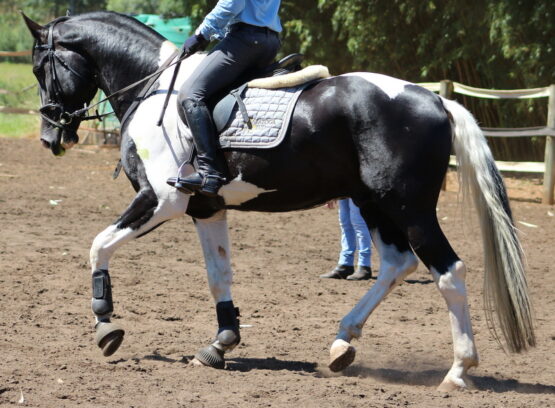
Fine-Tuning Precision
The Role of Rider Position and Aids in Achieving Precision
Achieving precision in lateral movements requires a delicate symphony between your position and aids as a rider. Your body becomes the conductor, guiding your horse through a harmonious dance. Proper rider position ensures clear communication and aids your horse in understanding your intentions.
- Seat: Maintain a balanced and centered seat, sitting deep in the saddle. Your seat influences impulsion and rhythm, providing subtle cues to your horse’s movement.
- Leg Aids: Your legs serve as the primary means of communication for lateral work. Apply precise and consistent leg aids, ensuring they’re neither too strong nor too light. The placement of your legs guides the direction and intensity of the lateral step.
- Rein Aids: Use rein aids to refine and shape the movement. Maintain a soft contact while providing gentle guidance to maintain alignment and balance.
Tips for Maintaining Consistent Rhythm and Tempo during Lateral Movements
Consistency in rhythm and tempo is the heartbeat of precision in lateral movements. Strive for a metronomic cadence to enhance the fluidity and elegance of your horse’s steps:
- Breathing and Counting: Develop a rhythm by syncing your breath with your horse’s strides. Counting the rhythm aloud or in your mind can help you maintain a steady tempo.
- Half-Halts: Employ half-halts to balance and collect your horse before initiating a lateral movement. This sets the stage for controlled, even steps.
- Transitions: Practice transitioning smoothly between gaits and within lateral movements. Transitions promote engagement and help maintain a consistent tempo.
Addressing Common Mistakes and Enhancing Precision
Precision is refined through addressing and rectifying common mistakes that can arise during lateral movements:
- Loss of Straightness: Keep your horse aligned and prevent drifting by using your leg aids to maintain direction and your rein aids for light flexion.
- Over-Bend or Under-Bend: Ensure your horse maintains proper bend without excessive flexion. Adjust your aids to encourage the correct degree of bend.
- Lack of Impulsion: If your horse lacks impulsion, apply active leg aids to encourage forward movement. Gradually refine your aids to achieve the desired energy level.
- Inconsistent Steps: Focus on maintaining equal and consistent steps. If steps become uneven, analyze your aids and make subtle adjustments.
- Tension and Resistance: Encourage relaxation and suppleness by using your seat, rein, and leg aids in harmony. Release pressure when your horse responds correctly.
- Rider Tension: Your own tension can impact your horse’s movement. Relax your body and maintain a supple connection with your horse through your aids.
Fine-tuning precision is a continuous journey, requiring attentive awareness and ongoing refinement. As you develop your rider skills and your horse’s responsiveness, the intricate tapestry of lateral movements will unfold in ever more captivating displays of harmony and accuracy.
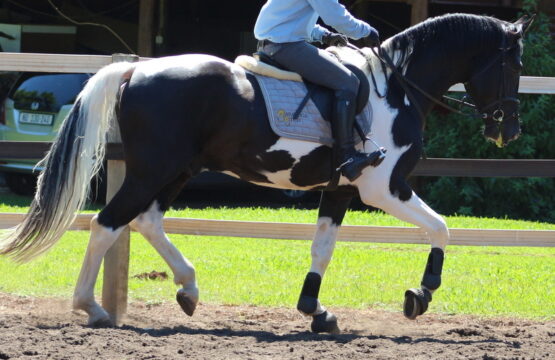
Developing a Training Plan
Outlining a Progressive Training Plan for Lateral Movements
Crafting a well-structured training plan is the compass that guides you through the labyrinth of lateral movement training. A progressive approach ensures that both you and your horse build a strong foundation and gradually ascend the staircase of complexity.
- Foundation Building (Weeks 1-2): Begin with exercises that enhance responsiveness and suppleness. Focus on straightness, bend, and transitions between gaits to establish a solid groundwork.
- Introduction to Lateral Movements (Weeks 3-4): Introduce simple lateral movements such as leg yield and shoulder-in at the walk. Emphasize rider aids and correct execution.
- Expanding Skills (Weeks 5-6): Progress to trotting and continue refining leg yield and shoulder-in. Introduce haunches-in in straight lines.
- Refinement and Consistency (Weeks 7-8): Refine the quality of lateral movements at both walk and trot. Begin lateral movements on curves to enhance balance.
- Advanced Lateral Movements (Weeks 9-10): Introduce more complex movements like haunches-in on curves and sidepass. Focus on maintaining precision and rhythm.
- Integration and Harmony (Weeks 11-12): Incorporate lateral movements into broader riding routines. Emphasize seamless transitions and maintaining relaxation throughout.
Sample Training Schedule for Incorporating Lateral Movements into Sessions
Day 1:
- Warm-up: 10 minutes of stretching and walking on a loose rein.
- Focus: Leg yield at the walk, 5 minutes in each direction.
- Transition work: Trot-walk-trot transitions, 5 minutes.
- Cool-down: 10 minutes of relaxed walking.
Day 2:
- Warm-up: 10 minutes of gentle trotting.
- Focus: Shoulder-in at the trot, 5 minutes in each direction.
- Transitions: Trot-canter-trot transitions, 5 minutes.
- Cool-down: 10 minutes of stretching and walking.
Day 3:
- Warm-up: 10 minutes of stretching and walking.
- Focus: Haunches-in on straight lines at the walk, 5 minutes in each direction.
- Flexibility: Serpentine patterns, 5 minutes.
- Cool-down: 10 minutes of relaxed walking.
Day 4:
- Warm-up: 10 minutes of light trotting and stretching.
- Focus: Sidepass practice, 5 minutes in each direction.
- Transitions: Canter-trot-canter transitions, 5 minutes.
- Cool-down: 10 minutes of stretching and walking.
The Importance of Patience and Gradual Progression
Patience is the compass that guides your journey through lateral movement training. Progression should be a gradual climb, respecting your horse’s physical and mental development. Rushing can lead to confusion and resistance. Every step forward, no matter how small, contributes to the bigger picture.
Remember, each horse is an individual, and some may grasp lateral movements quicker than others. Celebrate small victories and remain attuned to your horse’s signals. As you journey together, you’ll witness the transformation of raw movements into artful precision. The path to mastery is paved with patience, dedication, and a willingness to embrace the process.
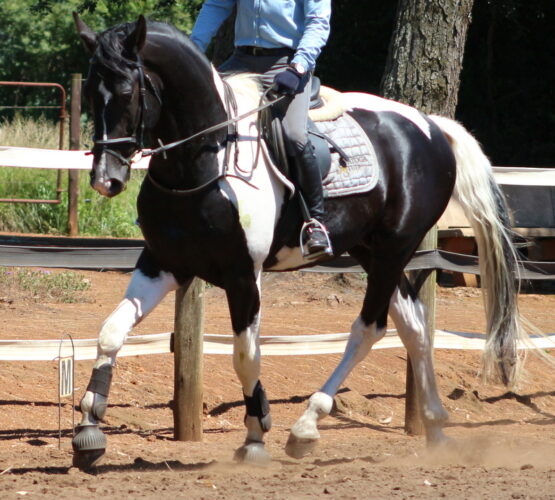
Building Trust and Partnership
How Lateral Movement Training Strengthens the Bond Between Horse and Rider
Lateral movement training isn’t solely about perfecting a set of movements; it is an important journey that forges an unbreakable bond between you and your equine companion. As you navigate the intricacies of lateral work, you’ll discover a unique avenue for communication. This journey is marked by shared moments of understanding, trust, and unity.
The very act of teaching and learning lateral movements demand a heightened level of attentiveness from both you and your horse. Your horse learns to read your subtle cues, while you become attuned to its responses. This intricate dance nurtures a deep sense of connection and empathy. With every synchronized step, you’re communicating not just with your aids, but through your heartbeats.
Highlighting the Positive Impact of Lateral Movements on the Overall Riding Experience
Lateral movements infuse a newfound vibrancy into your riding experience. The skills honed through lateral work spill over into other areas, enriching your interactions with your horse. The improved balance, suppleness, and responsiveness achieved in lateral movements contribute to a more harmonious ride in all disciplines, from dressage to trail riding.
Imagine the joy of guiding your horse through a series of fluid, controlled steps. Picture the satisfaction of executing a flawless shoulder-in that mirrors the rhythm of your heartbeat. These moments, born from the dedication to lateral movement training, transcend technique and become an art form.
Furthermore, the sense of accomplishment derived from mastering lateral movements nurtures a profound sense of pride in both rider and horse. The challenges overcome and the precision achieved create an unbreakable bond of achievement and shared success.
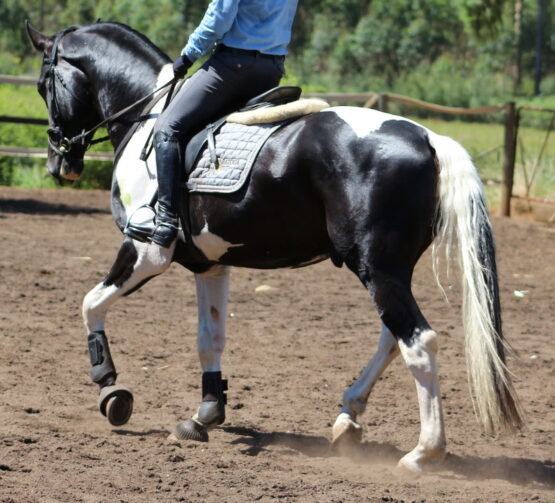
Troubleshooting and Troubleshooters
Lateral movement training, while rewarding, can present its fair share of challenges along the way. Recognizing these hurdles and having strategies to overcome them is essential for a successful journey.
- Resistance to Aids: Some horses may initially resist lateral movement cues. This could stem from confusion or discomfort with the new requests.
- Loss of Balance: Achieving balance during lateral movements is pivotal. Horses may struggle with maintaining equilibrium, resulting in crooked or uneven steps.
- Overbending or Underbending: Finding the sweet spot of the correct bend can be tricky. Horses might overbend, causing loss of alignment, or underbend, hindering the movement’s effectiveness.
- Lack of Engagement: For successful lateral movements, the horse’s hindquarters must be engaged. A lack of engagement can lead to lackluster steps and diminished precision.
Strategies for Overcoming Difficulties or Resistance from the Horse
- Patient Persistence: If your horse resists, maintain a patient and consistent approach. Repeated, clear cues coupled with positive reinforcement can help overcome resistance.
- Back to Basics: If challenges arise, revisit foundational exercises. Strengthening your horse’s response to basic aids can lay a more solid groundwork for lateral movements.
- Focus on Suppleness: Address resistance by emphasizing suppleness exercises. Work on bending, circles, and serpentines to improve flexibility and alleviate tension.
- Gradual Progression: When encountering resistance, consider breaking down the lateral movement into smaller steps. Gradually build up to the full movement to reduce frustration.
When to Seek Professional Assistance or Advice
While lateral movement training can be a fulfilling endeavor, there may come a point where seeking professional assistance or advice is beneficial:
- Persistent Challenges: If you encounter persistent challenges that hinder progress despite your efforts, a skilled trainer can provide fresh perspectives and tailored solutions.
- Physical Discomfort: If your horse displays signs of physical discomfort during lateral movements, such as stiffness or lameness, consult a veterinarian to rule out underlying issues.
- Rider Inexperience: If you’re new to lateral movement training or encounter difficulties beyond your expertise, a qualified instructor can offer guidance and hands-on support.
- Safety Concerns: If your horse’s resistance poses safety risks, seeking professional help can ensure both your safety and your horse’s well-being.
Remember, seeking assistance is a proactive step that demonstrates your dedication to your horse’s well-being and your commitment to mastering lateral movements. With the right guidance, challenges can be transformed into opportunities for growth and deeper understanding.
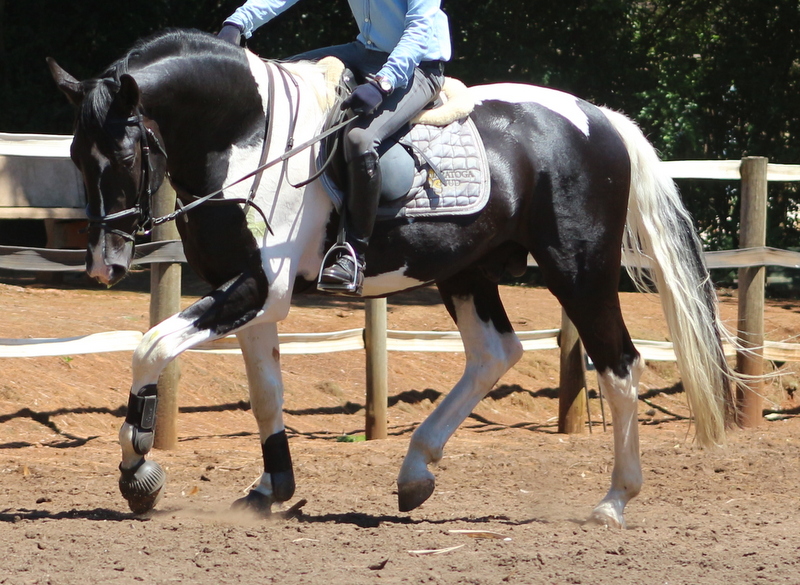
Celebrate your Progress
In the world of lateral movement training, every step – no matter how small – is a step closer to precision and mastery. It is essential to recognize and celebrate the journey of growth, acknowledging the significance of incremental improvements along the way.
As you and your horse navigate the challenges and triumphs of lateral movement training, remember that each beautifully executed step, each moment of synchronized communication, is a victory. Embrace the joy of progress, whether it’s a smoother transition, a more balanced step, or a newfound level of suppleness. By celebrating these small victories, you infuse your training sessions with positivity and motivation.
The Rewarding Journey of Achieving Precision in Every Stride
The pursuit of precision in lateral movements is a journey. It’s a journey that requires dedication, determination, and a genuine love for the art of horsemanship. As you refine your aids and your horse refines its responses, you embark on a path of mutual growth and understanding.
With every meticulously executed step, you’re not just perfecting a movement; you’re creating a symphony of connection and partnership. The pursuit of precision is not merely about achieving a mechanical goal; it’s about embodying the very essence of horsemanship – the dance between two beings, each trusting the other to move in perfect harmony.
As you progress, remember that each stride is an opportunity to honor the progress you’ve made, to celebrate the journey of growth, and to cherish the bond that lateral movement training nurtures between you and your horse. The road to precision is a rewarding one, paved with moments of grace, communication, and shared accomplishment.
Conclusion
Summarizing Key Takeaways
In the exhilarating world of lateral movement training, we’ve embarked on a journey of precision, partnership, and growth. As we draw the reins on this exploration, let’s recap the key takeaways that illuminate the path we’ve tread:
- Lateral movements are a captivating fusion of art and athleticism, showcasing the elegance and responsiveness of our equine companions.
- A solid foundation, built upon responsive communication, proper balance, and flexibility, serves as the launchpad for mastering lateral movements.
- Essential lateral movements such as leg yield, shoulder-in, haunches-in, and sidepass form the building blocks of precision and grace.
- Fine-tuning precision involves honing your rider position, maintaining a consistent rhythm, and addressing common mistakes with patience and determination.
- A well-structured training plan, crafted with gradual progression in mind, is the roadmap to navigating the complexities of lateral movement training.
- Through lateral movements, a profound bond of trust and partnership blossoms, nurturing a silent language of understanding and unity.
- Troubleshooting challenges and seeking assistance when needed are crucial steps in the journey toward mastering lateral movements.
- Celebrate the incremental victories, both large and small, and bask in the transformative power of lateral movement training.
The Importance of Precision in Lateral Movement Training
Precision in lateral movement training is not just a goal; it’s the very essence that elevates horse and rider to a realm of unparalleled connection. It’s the fine brushstroke that adds depth to the canvas of your partnership, turning a sequence of steps into a mesmerizing dance. Precision isn’t about robotic execution; it’s about expressing the language of horsemanship in its most eloquent form.
Continue Exploring Lateral Movements and Refining Your Training Techniques
As you stand at the crossroads of your lateral movement journey, the path forward is rich with possibilities. Continue to explore, refine, and immerse yourself in the beauty of lateral movements. Let curiosity guide you, and let the desire for greater harmony between you and your horse fuel your determination.
Whether you’re a seasoned equestrian or embarking on your first lateral steps, remember that each stride is an opportunity to weave your own story of precision, grace, and partnership. So, with reins in hand and heart aglow, venture forth and allow the enchanting world of lateral movement training to unfold before you.
Thank you for accompanying us on this voyage, and may your future rides be filled with the magic of every precisely executed stride.
Ride on, with grace and precision.
Further Reading
20 Mins of Lateral Work To Supple Your Horse – Novice — Lateral work is the ultimate suppleing tool, and can be done at all paces depending on your horse’s level of fitness and schooling.
How to introduce lateral movements Lateral work is important because it helps to keep your horse supple. There’s no getting away from the fact that none of our horses are getting any younger …
Why Lateral Work is So Important Learning how your horse moves sideways and using lateral work exercises is useful for suppling, assessing and establishing correct posture and …
